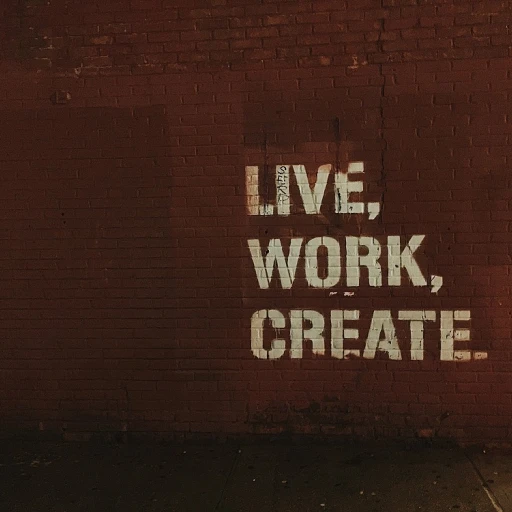
Understanding the Current Operational Framework
Evaluating the Present Structure of Operations
Understanding your company's current operational framework is essential to driving innovation in human resources. The operational structure encompasses various organizational structures such as functional, matrix, and divisional models. Each structure has its unique chain of command, span of control, and roles responsibilities dynamics. A functional structure, prevalent in many companies, groups employees based on their specialized roles within specific departments. While this may streamline processes within a department, it often results in silos, hindering cross-departmental communication and decision making. The matrix structure offers a more flexible approach. It encourages collaboration across different functional departments, which can lead to innovative solutions and quicker decision making. However, the dual reporting lines can create confusion and increase the complexity of managing teams. Divisional structures, common in large diversified companies, allow for more autonomy within separate divisions, leading to quick decision making adapted to each division’s needs. But the increased independence can occasionally lead to inefficiencies due to duplicated efforts across different divisions. In modern organizations, the best approaches often involve blending these types of organizational structures. By integrating elements from various organizational charts, companies strive to enhance their flexibility and responsiveness. They aim to adopt a structure best for their specific business needs, facilitating both communication and functional divisional efficiency. Ultimately, understanding these structures is crucial in identifying areas where innovative HR practices can be integrated to improve company operations. For instance, enhancing alignment and communication within the org structure can be achieved through strategic technology use. For more insights into enhancing workforce management, consider exploring this resource.The Role of Technology in Reshaping HR Operations
Technology's Transformative Role in HR Operations
In today's rapidly evolving business landscape, technology is not just an enabler but a driving force in reshaping human resources operations. The integration of advanced technologies into HR processes has revolutionized how companies manage their organizational structures and enhance employee engagement.
One of the most significant impacts of technology is the streamlining of communication and decision-making processes. With the advent of sophisticated HR software, companies can now create more dynamic organizational charts that reflect real-time changes in roles and responsibilities. This flexibility allows for a more responsive chain of command, ensuring that decision-making is both efficient and effective.
Moreover, technology facilitates the implementation of various organizational structures, such as matrix and divisional structures. These structures allow for better collaboration across departments and teams, fostering a more cohesive work environment. The use of digital tools enables HR departments to manage these complex structures with ease, ensuring that the span of control is optimized for the best organizational outcomes.
Another critical aspect is the enhancement of employee engagement through technology. By leveraging data analytics and AI-driven insights, HR teams can tailor their strategies to meet the unique needs of their workforce. This personalized approach not only boosts morale but also improves overall productivity.
For companies looking to integrate these technological advancements, solutions like Paychex and NetSuite offer seamless integration options. These platforms provide comprehensive tools for enhancing workforce management, making them an ideal choice for businesses aiming to optimize their HR operations. For more insights on this integration, you can explore enhancing workforce management with Paychex and NetSuite integration.
In conclusion, the role of technology in reshaping HR operations cannot be overstated. As companies continue to adapt to new challenges, the strategic use of technology will be crucial in maintaining a competitive edge and fostering a thriving organizational culture.
Flexible Work Models and Their Impact on Operations
Adapting to Dynamic Work Environments
In the contemporary business landscape, the adoption of flexible work models has revolutionized traditional company operations. Organizations have realized that rigid organizational structures can stifle creativity and impede the flow of information. In contrast, flexible work arrangements aim to dismantle these barriers, promoting a more collaborative and agile environment.
Many companies are embracing hybrid work models, where employees split their time between office and remote work. This approach can enhance work-life balance while maintaining productivity. Moreover, remote work capabilities extend a business's reach, enabling it to tap into global talent pools and diversify its org structure.
Implementing a matrix structure within an organization allows individuals from different functional departments to come together, creating interdisciplinary teams that drive innovation. Such structures facilitate cross-functional collaboration, encouraging communication and ensuring that each team member brings their roles responsibilities into alignment with the company's overarching goals.
- Strengthens team synergy by promoting open communication.
- Enhances employee satisfaction by offering flexibility in job roles.
- Encourages a high degree of decision making by empowering teams to operate autonomously.
The advent of digital tools has been integral in supporting these flexible work models. With the right technology, maintaining seamless communication in a dispersed working arrangement is achievable. These tools facilitate real-time data exchange and collaboration, further dissolving the traditional chain command hurdles and promoting an integrated corporate structure across diverse divisions.
Enhancing Employee Engagement through Innovative HR Practices
Innovative Practices to Boost Employee Engagement
In today's rapidly evolving business landscape, enhancing employee engagement is crucial for maintaining a competitive edge. Companies are increasingly recognizing the importance of innovative human resources practices to foster a more engaged workforce. This involves rethinking traditional organizational structures and adopting new approaches that align with modern work environments.
Rethinking Organizational Structures
Traditional organizational structures, such as the functional structure or divisional structure, often limit flexibility and communication. By adopting a matrix structure, companies can facilitate better collaboration across departments and teams. This approach allows for more dynamic roles and responsibilities, enabling employees to contribute more effectively to the company's goals.
Empowering Teams through Communication
Effective communication is the backbone of any successful organization. Companies are implementing innovative communication tools and platforms to enhance interaction among employees. These tools not only improve the flow of information but also empower teams to make informed decisions quickly. By fostering an open communication culture, organizations can break down the traditional chain of command and encourage a more collaborative work environment.
Leveraging Technology for Engagement
Technology plays a pivotal role in reshaping how companies engage with their employees. From using AI-driven platforms to personalize employee experiences to implementing cloud-based solutions for seamless collaboration, technology is transforming the way organizations operate. These advancements enable companies to create a more inclusive and engaging workplace, ultimately boosting employee satisfaction and productivity.
Fostering a Culture of Inclusion
Integrating diversity and inclusion into the organizational structure is not just a trend but a necessity. Companies are adopting inclusive practices that recognize and value the diverse backgrounds and perspectives of their employees. By creating an inclusive culture, organizations can enhance employee engagement and drive innovation, as diverse teams bring a wider range of ideas and solutions to the table.
In conclusion, enhancing employee engagement through innovative HR practices requires a holistic approach that considers the company's organizational structure, communication strategies, and technological advancements. By embracing these changes, companies can create a more dynamic and engaged workforce, ready to tackle the challenges of the future.
Integrating Diversity and Inclusion into the Operational Structure
Reinforcing Inclusive Work Practices within HR Operations
Integrating diversity and inclusion into the company’s operational framework is not merely a trend, but rather a fundamental necessity. Organizations are progressively recognizing the value of a diverse workforce, which boosts innovation and enhances decision making. The role of HR in this context is pivotal as it involves structuring the organizational charts to reflect and support a diverse and inclusive workplace.
HR departments can start by examining existing organizational structures, such as the matrix or divisional structures, to identify how diversity and inclusion initiatives can be best implemented. An organization's chain of command must be flexible enough to accommodate and encourage diverse perspectives at every hierarchical level. This restructuring may involve reassessing the company’s corporate structure, ensuring that it fosters an environment where every employee, regardless of their background, feels valued and integral to the organization.
Furthermore, communication within a diversified work environment is key. HR teams should facilitate open and compassionate lines of communication across all employees and departments. This can lead to the creation of inclusive org charts that accurately represent the roles and responsibilities within the corporate structure, promoting cross-functional collaboration and shared goals across the org structure.
Implementing these changes requires the development of strategies that align with the organization's goals, ensuring a seamless integration into the existing organizational frameworks. Encouraging collaboration between different functional divisions and leveraging employee resource groups can further reinforce a culture of inclusion.
Ultimately, integrating diversity and inclusion effectively calls for a coordinated effort across all levels of the span of control. By fostering a workplace that celebrates inclusivity, companies stand to gain not just improved employee engagement, but also enhanced operational success, driving the business towards a sustainable and prosperous future.
Future Trends in HR and Their Influence on Company Operations
Embracing the Future of HR: Trends and Impacts
As we look ahead, the landscape of human resources is poised for transformative changes that will significantly influence company operations. The integration of advanced technologies, flexible work models, and a focus on diversity and inclusion are setting the stage for a new era in HR.
Technological Advancements and Their Role
Technology continues to be a driving force in reshaping HR operations. The use of artificial intelligence and machine learning is enhancing decision-making processes, allowing for more efficient management of organizational structures. These technologies facilitate better communication across teams and departments, streamlining the chain of command and improving the overall organizational chart.
Flexible Work Models: A New Norm
The shift towards flexible work models is not just a trend but a necessity for modern businesses. Companies are adopting hybrid and remote work structures, which require a reevaluation of traditional organizational structures. This shift impacts the span of control and roles and responsibilities within teams, necessitating a more adaptable approach to managing company operations.
Diversity and Inclusion: Core to Organizational Success
Integrating diversity and inclusion into the operational framework is becoming increasingly important. Companies that prioritize these elements within their corporate structure are better positioned to foster innovation and enhance employee engagement. A diverse workforce brings varied perspectives, which can lead to more effective problem-solving and decision-making processes.
Future Trends in Organizational Structures
Looking forward, we can expect to see a rise in matrix and divisional structures as companies strive to become more agile and responsive to market changes. These types of organizational structures allow for greater flexibility and collaboration across functional and divisional teams, promoting a more dynamic and innovative work environment.
In conclusion, the future of HR is about embracing change and leveraging new tools and strategies to create a more efficient and inclusive organizational framework. By staying ahead of these trends, companies can ensure they are well-equipped to meet the challenges of tomorrow's business landscape.












